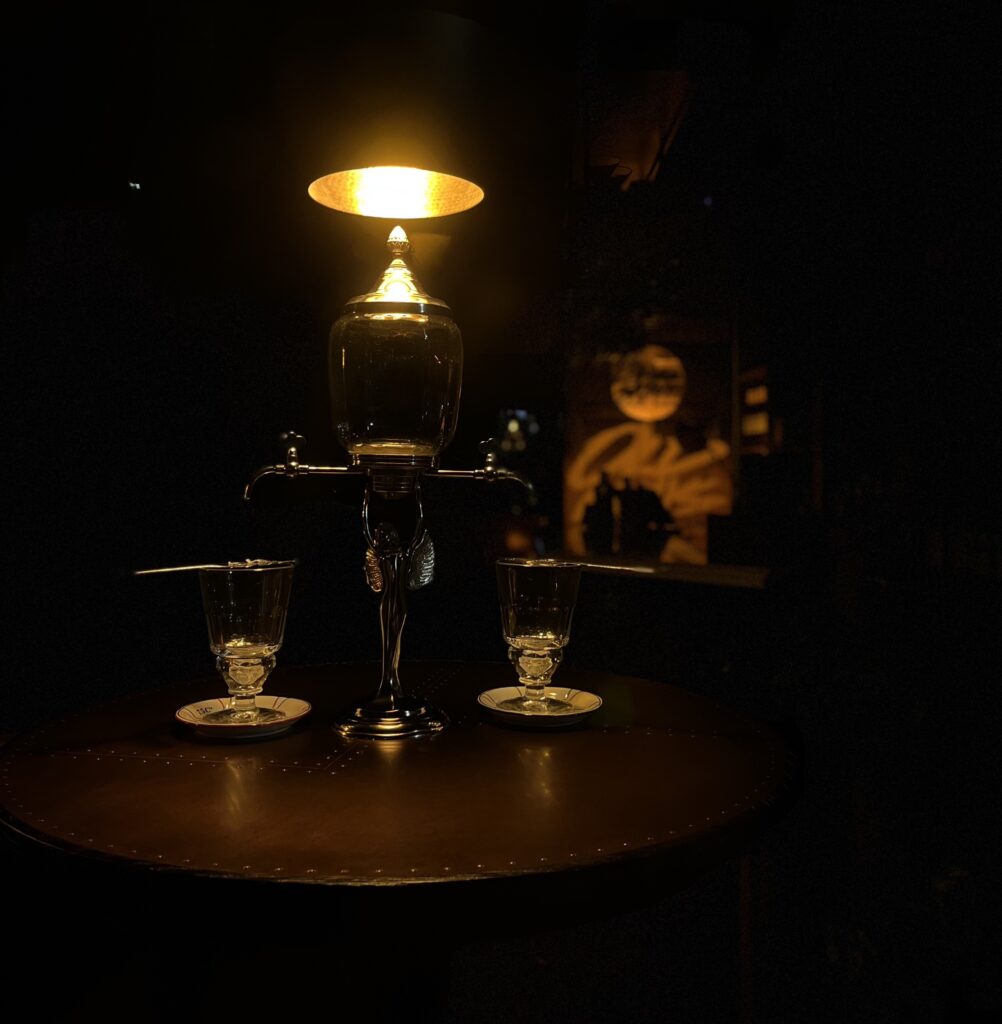From banned ‘green fairy’ to revived spirit, absinthe’s myth, mystery, and resurgence reveal why Oscar Wilde was enchanted.
Credit: Abigail Anthony – Oxford based writer and friend of Lynrace
“After the first glass, you see things as you wish they were,” Oxford University alumnus Oscar Wilde supposedly said of absinthe to his friend Ada Leverson, a conversation she documented in her 1930 book. “After the second,” Wilde continued, “you see them as they are not. Finally you see things as they really are, and that is the most horrible thing in the world.”

Why was Wilde’s observation narrowly tailored to absinthe specifically rather than alcohol generally? Absinthe indeed has a unique appearance, one so striking that even the Oxford English Dictionary’s definition states that it is “usually green in colour.” The mysterious translucent chartreuse hue — something like a diluted emerald, appropriate for a poison bottle or witches’ brew — is a product of chlorophyll extracted from the steeped herbs. Unlike other spirits, absinthe has unmistakable dominant flavours: The anise and fennel deliver a liquorice taste that is complemented by lingering herbal notes. To weaken its bitterness, absinthe is often diluted by placing a sugar cube on a sieve atop the glass, then pouring cold water onto the sugar; as the sweet liquid drips into the absinthe, its colour transforms from clear green to milky yellow.
But perhaps absinthe was most notable for its alleged effects, not colour nor taste. Its alcohol level (unless diluted with water) far exceeds that of other intoxicating drinks, ranging anywhere from 45 to 75 percent; by contrast, gin reaches a maximum of roughly 50 percent alcohol, vodka tends to be about 40 percent, while red wine averages somewhere between the 11 to 15 percent range. By 1866, a doctor in Philadelphia had recorded “more than more than 150 cases of chronic absinthism,” a purported syndrome characterised by symptoms such as seizures, hallucinations, and mental deterioration.
Absinthe slowly but surely acquired a reputation as a dangerous substance, and by the early 20th century, it had been banned in the United States, France, Belgium, Switzerland, and the Netherlands — although, in some countries, other alcoholic drinks were similarly banned as prohibition movements gained traction. Now, scientists have shown that the claims about absinthe’s supposed health risks were flatly wrong: Although it does contain thujone that can cause hallucinations, the concentrations were far too low to cause any significant psychotropic effects. Absinthe was legalised in Switzerland as late as 2005 and after a century of prohibition. With its legalisation, absinthe production returned to its birthplace in Val-de-Travers, and the spirit has since experienced a resurgence in both Switzerland and internationally. With its growing popularity and despite being banned for a century, the global market for absinthe is expected to exceed £30 billion in the coming years. While absinthe is experiencing a resurgence, it remains a niche segment compared to whisky which continues to dominate the global spirits with an expected £90 billion market.
So perhaps Wilde was right about absinthe as governments were restricting access to it: Rather than cause hallucinations, enough absinthe might provide clarity. Now, his intellectual descendants at Oxford can test his hypothesis in an enjoyable experiment. At Lynrace Spirit, the menu of contemporary cocktails is balanced by six traditional absinthes, served in a “classic fashion” with an elegant table-top fountain. The base of the fountain is shaped not like an angel, but as a delicate fairy — a nod to the drink’s whimsical nickname “the green fairy.”